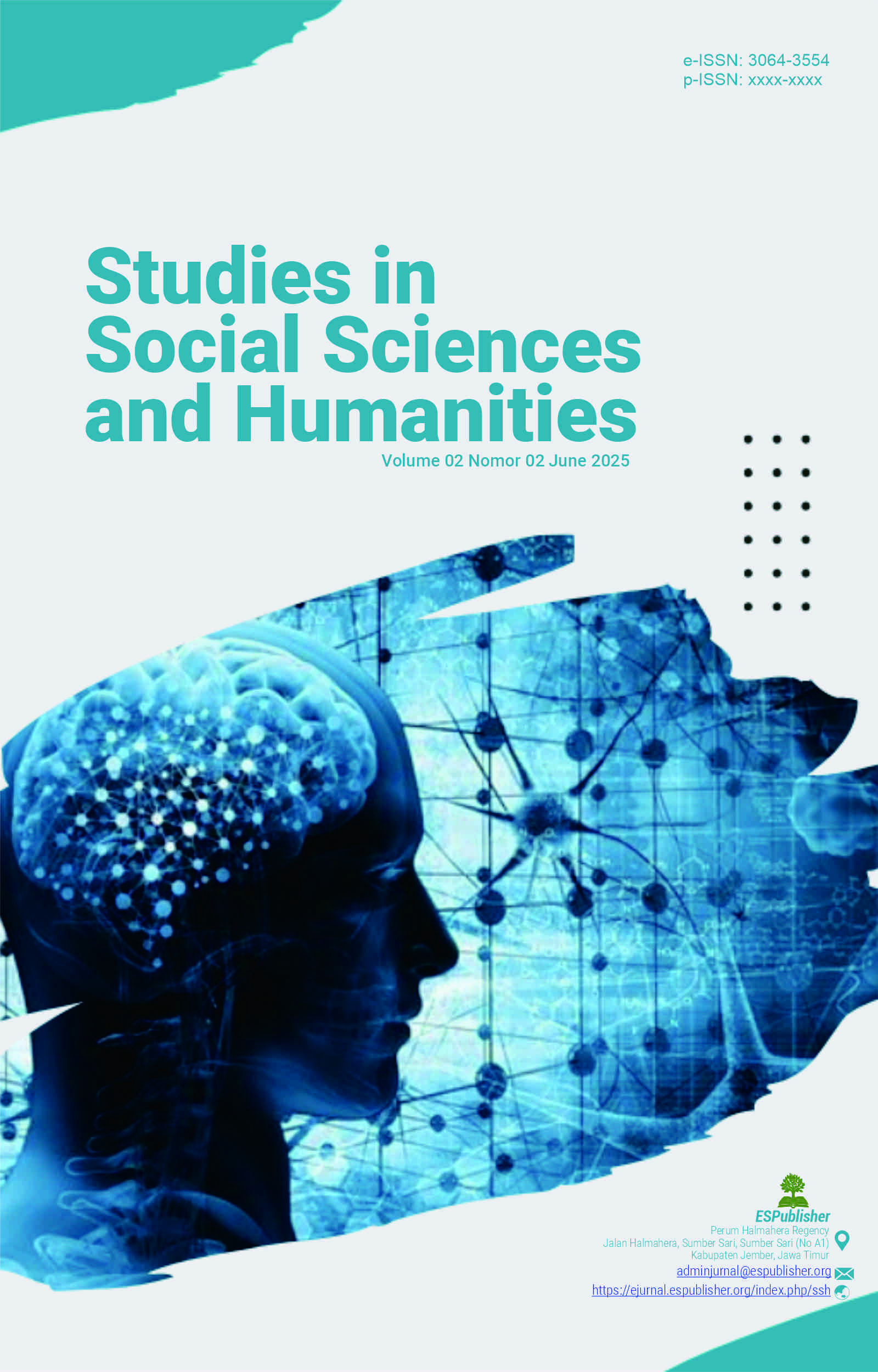An Analysis of Code Mixing by EFL Learners During English Speaking Practice
Bahasa Indonesia
DOI:
https://doi.org/10.63232/ssh.v2i2.60Keywords:
Code Mixing, Speaking Practice, English as a Foreign Language (EFL)Abstract
This study investigates the phenomenon of code mixing in English as a Foreign Language (EFL) classrooms, particularly focusing on students in a responsive speaking class at Universitas Muhammadiyah Jember. The research aims to identify the types of code mixing used, the contexts in which it occurs, and the reasons behind its usage. Utilizing a qualitative descriptive method, data were collected through classroom observations and semi-structured interviews. The analysis revealed that students frequently employ code mixing during group discussions and presentations. Four main types of code mixing were identified: word insertion, phrase insertion, hybrid forms, and clause mixing. The findings suggest that code mixing helps students articulate their ideas more effectively, especially when facing vocabulary limitations or feeling anxious. It also serves as a communicative strategy that supports language acquisition by boosting confidence and aiding understanding. This study concludes that code mixing is not merely a linguistic shortcut but a meaningful tool in the language learning process. The implications of this research underscore the pedagogical value of integrating code mixing into classroom practices to support EFL learners' speaking development.
Downloads
References
Bhatia, T.K. 2010. “Language Mixing and Code-Switching: A Sociolinguistic Perspective.” Research Methods in Sociolinguistics: 123–45.
Creese, A, and A Blackledge. 2015. 35 Translanguaging and Identity in Educational Settings. Annual Review of Applied Linguistics.
Cummins, J. 2000. “Language, Power, and Pedagogy: Bilingual Children in the Crossfire.” Multilingual Matters.
Fahruddiningrum, F. 2019. “Sasak-Taliwang Code Mixing Used Among Inhabitants of Jantuk Village Mantang in Central Lombok.” International Journal of Multicultural and Multireligious Understanding.
Fahruddiningrum, Fitriah. 2019. “Sasak-Taliwang Code Mixing Used Among Inhabitants of Jantuk Village Mantang in Central Lombok.” International Journal of Multicultural and Multireligious Understanding 6(5): 494. doi:10.18415/ijmmu.v6i5.1105.
Horwitz, E.K. 2021. “Language Anxiety and Its Impact on Speaking Performance in the EFL Classroom.” Language Teaching 25(1): 22–37.
Lin, A. M. Y. 2019. “Code-Switching and Translanguaging in Bilingual Classrooms: A Pedagogical Focus.” Journal of English Language Teaching 5(2): 123–34.
Musyken, P. 2000. “Bilingual Speech A Typology of Code Mixing.” Cambridge University Press.
Nur Aziza, Rohima. 2020. “An Investigative Study of Code Mixing Among the EFL University Students in Universitas Sembilanbelas November Kolaka.”
Suwito. 1985. “Pengantar Awal Sosiolinguisti: Teori Dan Problem. Surakarta: Henary Udoro Bagus. 2008. The Analysis of English Code Mixing Used in MTV AmpuhHenary. Udoro, Bagus.” http://eprints/ums.ac.id/2173.
Zhou, G, and L Wei. 2020. “The Use of Code-Mixing in the Chinese EFL Classroom: Perspectives and Attitudes.” Journal of Multilingual and Multicultural Development 41(5): 512–28.
Downloads
Published
How to Cite
Issue
Section
Categories
License
Copyright (c) 2025 SS&H: Studies in Social Sciences and Humanities

This work is licensed under a Creative Commons Attribution-NonCommercial 4.0 International License.
Authors who publish with this journal agree to the following terms:
Authors retain copyright and grant SS&H: Studies in Social Sciences and Humanities the right of publication with the work simultaneously licensed under a Creative Commons Attribution License that allows others to share the work with an acknowledgment of the work's authorship and publication in this journal.
Authors can enter into separate, additional contractual arrangements for the non-exclusive distribution of the journal's published version of the work (e.g., post it to an institutional repository or publish it in a book), with an acknowledgment of its publication in this journal.
Authors are permitted and encouraged to post their work online (e.g., in institutional repositories or on their website) after the publication process, as it can lead to productive exchanges, as well as earlier and greater citation of published work.

